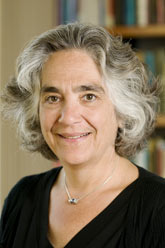
Handy Links
SLAC News Center
SLAC Today
- Subscribe
- Archives: Feb 2006-May 20, 2011
- Archives: May 23, 2011 and later
- Submit Feedback or Story Ideas
- About SLAC Today
SLAC News
Lab News
- Interactions
- Lightsources.org
- ILC NewsLine
- Int'l Science Grid This Week
- Fermilab Today
- Berkeley Lab News
- @brookhaven TODAY
- DOE Pulse
- CERN Courier
- DESY inForm
- US / LHC
SLAC Links
- Emergency
- Safety
- Policy Repository
- Site Entry Form

- Site Maps
- M & O Review
- Computing Status & Calendar
- SLAC Colloquium
- SLACspeak
- SLACspace
- SLAC Logo
- Café Menu
- Flea Market
- Web E-mail
- Marguerite Shuttle
- Discount Commuter Passes
-
Award Reporting Form
- SPIRES
- SciDoc
- Activity Groups
- Library
Stanford
Around the Bay
From the Director: First Light
 NASA and the laboratory celebrated this week as the first light images from
the Gamma-ray Large Area Space Telescope were unveiled along with the new name for the observatory: Fermi Gamma-ray Space Telescope. The traditional ceremony
marking the transition from on-orbit checkout to science is already being overtaken by events, with the rapid and trouble-free turn-on of the instruments. The first papers from the Large Area Telescope collaboration are in the final stages of preparation and the science results are starting to flow.
NASA and the laboratory celebrated this week as the first light images from
the Gamma-ray Large Area Space Telescope were unveiled along with the new name for the observatory: Fermi Gamma-ray Space Telescope. The traditional ceremony
marking the transition from on-orbit checkout to science is already being overtaken by events, with the rapid and trouble-free turn-on of the instruments. The first papers from the Large Area Telescope collaboration are in the final stages of preparation and the science results are starting to flow.
While we celebrate FGST first light this summer, we look forward to celebrating first light from the Linac Coherent Light Source next summer. FGST has demonstrated—beautifully—its ability to detect the gamma rays, orbiting 550 kilometers above the earth’s surface. Starting next summer, LCLS will demonstrate its ability to generate coherent X-rays using electron bunches prepared in the SLAC linac. The first LCLS hutch will be ready to do the first experiments in a phase we call "early science." While the LCLS project completion is not until 2010, the opportunity to start early science in 2009 will give physicists and experimenters a wonderful opportunity to start to explore the new frontiers that the LCLS will open.
And while we celebrate first light in our different venues at SLAC, on September 10, CERN will celebrate first beam as they circulate protons in the Large Hadron Collider's 27-kilometer tunnel for the first time. This is a huge step towards opening the TeV frontier for the field of high energy physics over the next two years as the machine becomes fully operational.
To explore cataclysmic events in the universe, to study the ultra fast frontier, and to get our first look at the TeV energy scale, it was essential that visionary scientists were doing research and developing the experimental and theoretical concepts 15–20 years ago. FGST and LCLS were conceived in the early 1990’s. The origins of the LHC stretch back to the 1980’s. Whole careers are dedicated to delivering these scientific opportunities. In this epoch of big science in many different fields, we must simultaneously capture the science of today and be dreaming of the opportunities of the future. Without the ability and drive to think and then plan over several decades, we will not be able to continue to deliver these spectacular discovery opportunities. A clear conclusion, difficult to achieve but essential for our long-term prospects, is that to deliver on big science opportunities, some level of stability and continuity are essential. This is the only way that we can ensure success in the farsighted development efforts and in the long-term programs that will define our future.